
Roots
The very strands that crown us hold whispers of ancestry, tales passed down through generations, long before the advent of modern laboratories or commercial products. To truly comprehend modern textured hair care, one must first listen to these echoes, acknowledging that every coil, kink, and wave carries a profound lineage. Our hair, a biological marvel, simultaneously serves as a living archive, connecting us to communal histories and personal stories.
It is a dialogue between the cellular and the cultural, a silent yet powerful testament to where we come from and how we have learned to care for ourselves. This exploration begins by peeling back the layers, revealing the fundamental components of textured hair and the ancient wisdom that shaped its early tending.
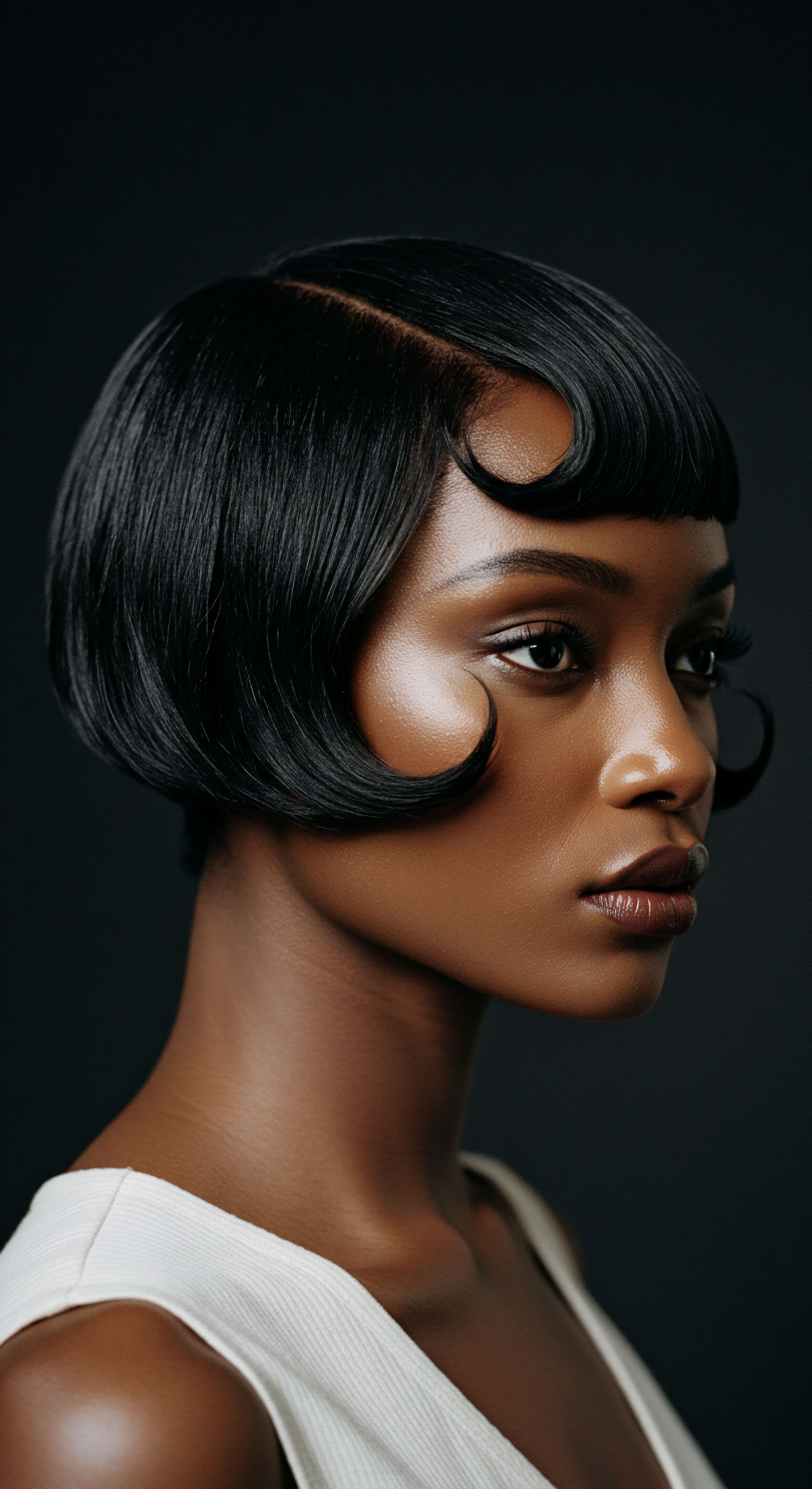
Hair Anatomy and Physiology Specific to Textured Hair
To understand textured hair is to appreciate its distinct structural nuances, setting it apart from straighter hair types. At its core, every strand of hair emerges from a follicle, a tiny organ nestled within the skin. The shape of this follicle plays a paramount role in determining hair’s curl pattern.
Textured hair typically grows from elliptical or flattened follicles, rather than round ones. This asymmetrical shape causes the hair shaft to twist as it grows, resulting in the characteristic curves, bends, and spirals we observe.
Consider the Cortex, the inner layer of the hair shaft, composed of keratin proteins. In textured hair, these keratin bundles are arranged unevenly, contributing to the hair’s natural curvature and, paradoxically, its susceptibility to breakage. The outer layer, the Cuticle, consists of overlapping scales, similar to shingles on a roof. In highly textured hair, these scales tend to be more lifted, making the hair more porous.
This increased porosity means textured hair can readily absorb moisture, yet it can also lose it just as quickly, leading to dryness if not properly managed. The unique structural characteristics of textured hair demand a specific approach to care, one that prioritizes hydration and protection.
Another key aspect involves the distribution of lipids and moisture. Textured hair often exhibits an uneven distribution of natural oils, or sebum, from the scalp down the hair shaft. Due to its coiled path, sebum struggles to travel effectively from the scalp to the ends, leaving the mid-lengths and ends particularly vulnerable to dryness. This inherent dryness is a significant factor driving many modern textured hair care practices, which often center on moisturizing and sealing strategies.
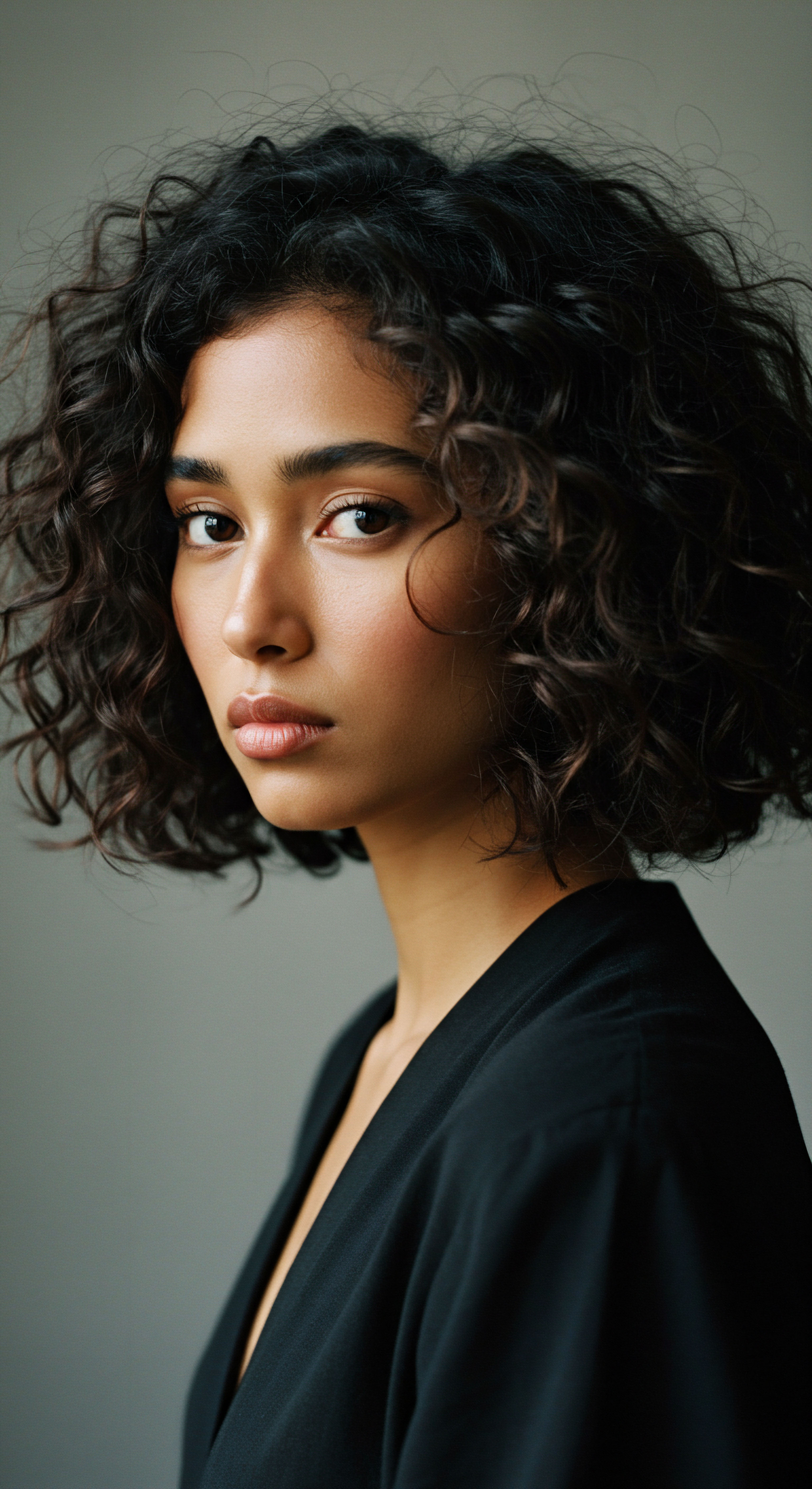
Textured Hair Classification Systems
The desire to categorize and understand hair patterns has led to various classification systems, serving as a common language for identifying hair types. While no system is perfect, they offer a starting point for understanding hair’s inherent characteristics and informing care routines. The most widely recognized system, often attributed to Andre Walker, classifies hair into four main types, with subcategories for textured hair.
- Type 1 ❉ Straight hair, without curl.
- Type 2 ❉ Wavy hair, with a gentle S-shape.
- Type 3 ❉ Curly hair, forming distinct loops.
- Type 4 ❉ Coily hair, with tight, spring-like patterns.
Within Types 3 and 4, further distinctions are made using letters (A, B, C) to denote the tightness of the curl or coil. For instance, 3A might refer to loose, bouncy curls, while 4C describes tightly coiled, Z-patterned strands that experience significant shrinkage. This granular classification helps individuals and stylists identify specific needs, such as the best products for curl definition or the most effective detangling methods for very tight coils.
However, it is important to acknowledge that hair often presents with multiple patterns on a single head, and hair type can change over time due to hormonal shifts, environmental factors, or styling practices. These systems provide a framework, yet true understanding extends beyond simple labels to a deeper connection with one’s unique hair.

The Essential Lexicon of Textured Hair
A specialized vocabulary has grown around textured hair care, reflecting its distinct needs and practices. Understanding these terms is essential for anyone seeking to navigate the world of textured hair with clarity.
- Porosity ❉ This refers to hair’s ability to absorb and retain moisture. Low porosity hair has tightly bound cuticles, resisting moisture entry but retaining it once absorbed. High porosity hair has raised cuticles, absorbing moisture quickly but losing it just as fast. Medium porosity offers a balanced absorption and retention.
- Elasticity ❉ The hair’s capacity to stretch and return to its original shape without breaking. Healthy hair possesses good elasticity, indicating sufficient moisture and protein balance.
- Density ❉ The number of individual hair strands on one’s head. This influences how hair appears full or thin, regardless of strand thickness.
- Shrinkage ❉ The reduction in hair length that occurs as coiled hair dries, appearing much shorter than its actual length when wet. This is a natural characteristic of highly textured hair.
- Co-Washing ❉ The practice of washing hair with conditioner only, skipping shampoo, to preserve moisture.
- Protective Style ❉ Hairstyles that tuck away the ends of the hair, minimizing manipulation and exposure to environmental elements, promoting length retention.
These terms, far from being mere jargon, represent fundamental concepts that guide product selection, styling choices, and overall hair health strategies. They are the building blocks of a personalized care approach, allowing for a more informed and effective hair journey.
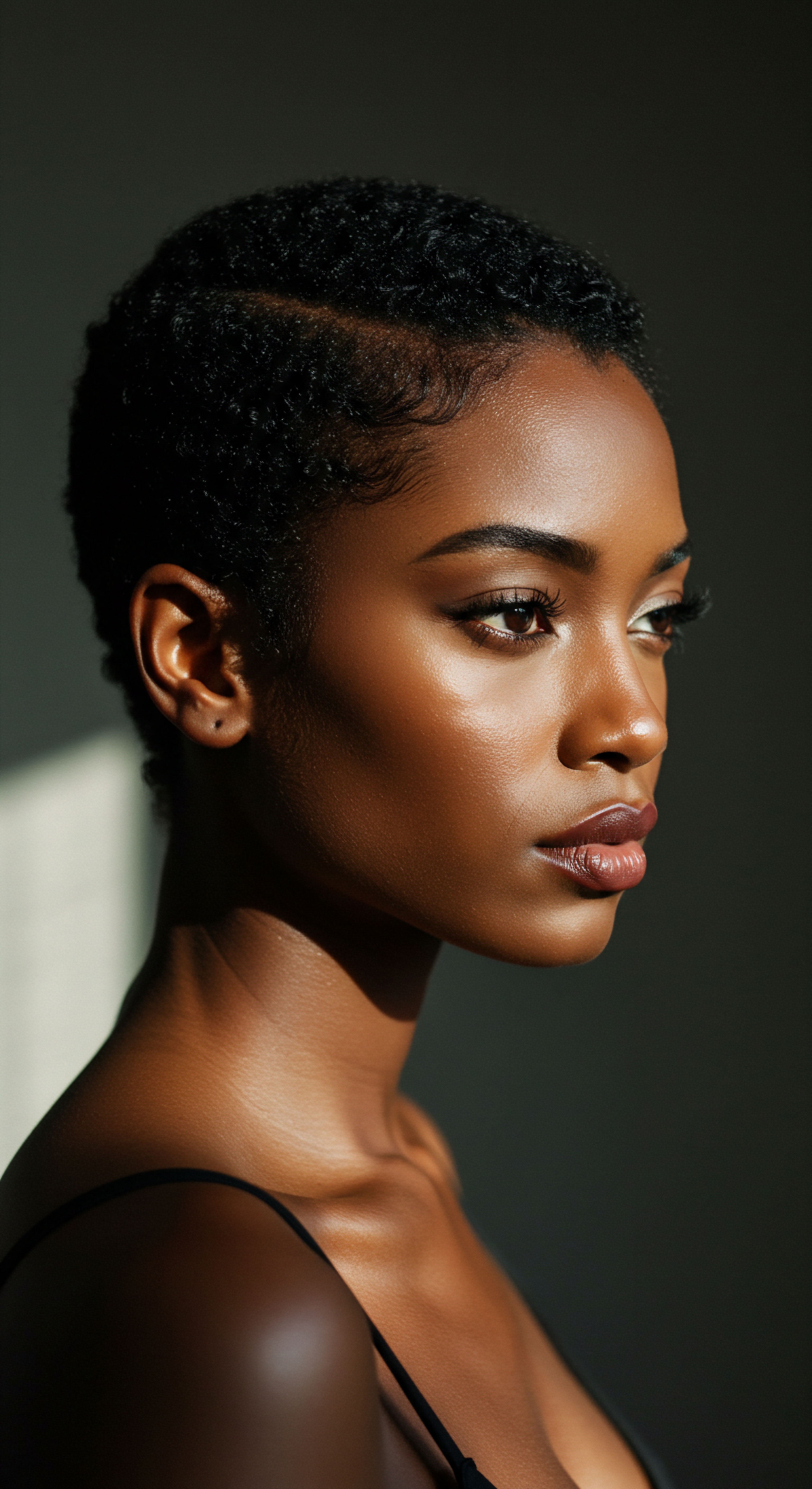
Hair Growth Cycles and Influencing Factors
Hair growth is a cyclical process, unfolding in distinct phases. Understanding these cycles provides insight into hair health and potential challenges.
- Anagen Phase ❉ The active growth period, lasting from two to seven years. During this time, hair cells divide rapidly, and new hair forms.
- Catagen Phase ❉ A transitional phase, lasting about two to three weeks, where hair growth stops, and the hair follicle shrinks.
- Telogen Phase ❉ The resting phase, lasting around two to four months, during which old hair rests while new hair begins to grow. Hair shedding typically occurs during this phase.
For textured hair, various factors can influence these cycles. Genetics play a significant role in determining curl pattern, density, and growth potential. Nutritional deficiencies, stress, hormonal imbalances, and certain medications can disrupt the normal growth cycle, leading to thinning or shedding.
Additionally, improper hair care practices, such as excessive tension from tight styles or harsh chemical treatments, can cause mechanical damage to the hair follicle, potentially impacting future growth. Recognizing these influences helps in cultivating a holistic approach to hair wellness, where external care aligns with internal well-being.
Understanding the foundational biology of textured hair reveals its inherent thirst for moisture and a need for gentle handling.

Ritual
Stepping beyond the elemental understanding of textured hair, we find ourselves at the threshold of daily practices, the rhythmic gestures that transform care into a meaningful ritual. The application of product, the shaping of a style, the mindful detangling—these are not merely tasks but often a quiet dialogue with one’s heritage, a connection to ancestral methods adapted for contemporary life. This section invites us to consider how these practical applications, from the most foundational techniques to the most intricate transformations, are deeply informed by a history of resourcefulness and cultural expression. It is here that ancient wisdom meets modern innovation, shaping the tangible experiences of textured hair.

Protective Styling Encyclopedia
Protective styles stand as a cornerstone of textured hair care, deeply rooted in historical practices and continually evolving. These styles, designed to minimize manipulation and shield delicate strands from environmental aggressors, serve a dual purpose ❉ promoting hair health and expressing cultural identity.
Historically, various forms of braiding and twisting were not only aesthetic expressions but also practical solutions for managing hair in diverse climates and for signifying social status, age, or marital standing within African communities. Modern protective styles carry forward this legacy, offering both versatility and preservation.
- Box Braids ❉ Individual braids, often with added extensions, that allow for significant length and versatile styling while protecting the natural hair.
- Twists ❉ Two-strand or three-strand twists, which can be done on natural hair or with extensions, offering a lighter protective option.
- Cornrows ❉ Braids created close to the scalp in rows, a technique with deep historical roots, serving as both a protective measure and a canvas for intricate designs.
- Faux Locs and Marley Twists ❉ Styles that mimic the appearance of traditional locs or twists using synthetic hair, offering a temporary protective alternative.
- Bantu Knots ❉ A traditional African style where sections of hair are twisted and coiled into small, tight buns, often used to set curls or as a standalone style.
The decision to wear a protective style often reflects a conscious choice to honor heritage, protect hair from damage caused by manipulation or heat, and encourage growth. These styles allow for periods of rest from daily styling, reducing breakage and helping to retain length over time. The selection of a particular protective style can be a deeply personal statement, connecting the wearer to a rich cultural lineage while embracing modern aesthetic preferences.

Natural Styling and Definition Techniques
Beyond protective styles, a vast array of techniques exist to define and celebrate the natural texture of hair. These methods, often relying on product application and gentle manipulation, aim to enhance the hair’s inherent curl pattern without altering its structure.
One popular approach is the Wash and Go, which involves cleansing, conditioning, and applying styling products to wet hair to encourage natural curl clumping and definition. This method requires understanding one’s hair porosity and choosing products that offer the right balance of moisture and hold. Another technique, Finger Coiling, involves individually wrapping small sections of hair around a finger to create distinct, elongated curls. This method is labor-intensive but yields highly defined results.
For those seeking more volume and less definition, a Fluff and Pick approach might be favored, using a wide-tooth comb or pick to gently lift the roots after hair has dried. The Shingling method involves applying a styling product to small sections of wet hair, smoothing each section from root to tip to define individual curls. These techniques, while modern in their product application, echo historical practices of careful hair separation and shaping to achieve desired looks.
The rise of the natural hair movement has brought these techniques to the forefront, encouraging individuals to move away from chemical relaxers and embrace their inherent hair patterns. This shift is not merely aesthetic; it represents a reclamation of self and a celebration of diverse beauty standards.
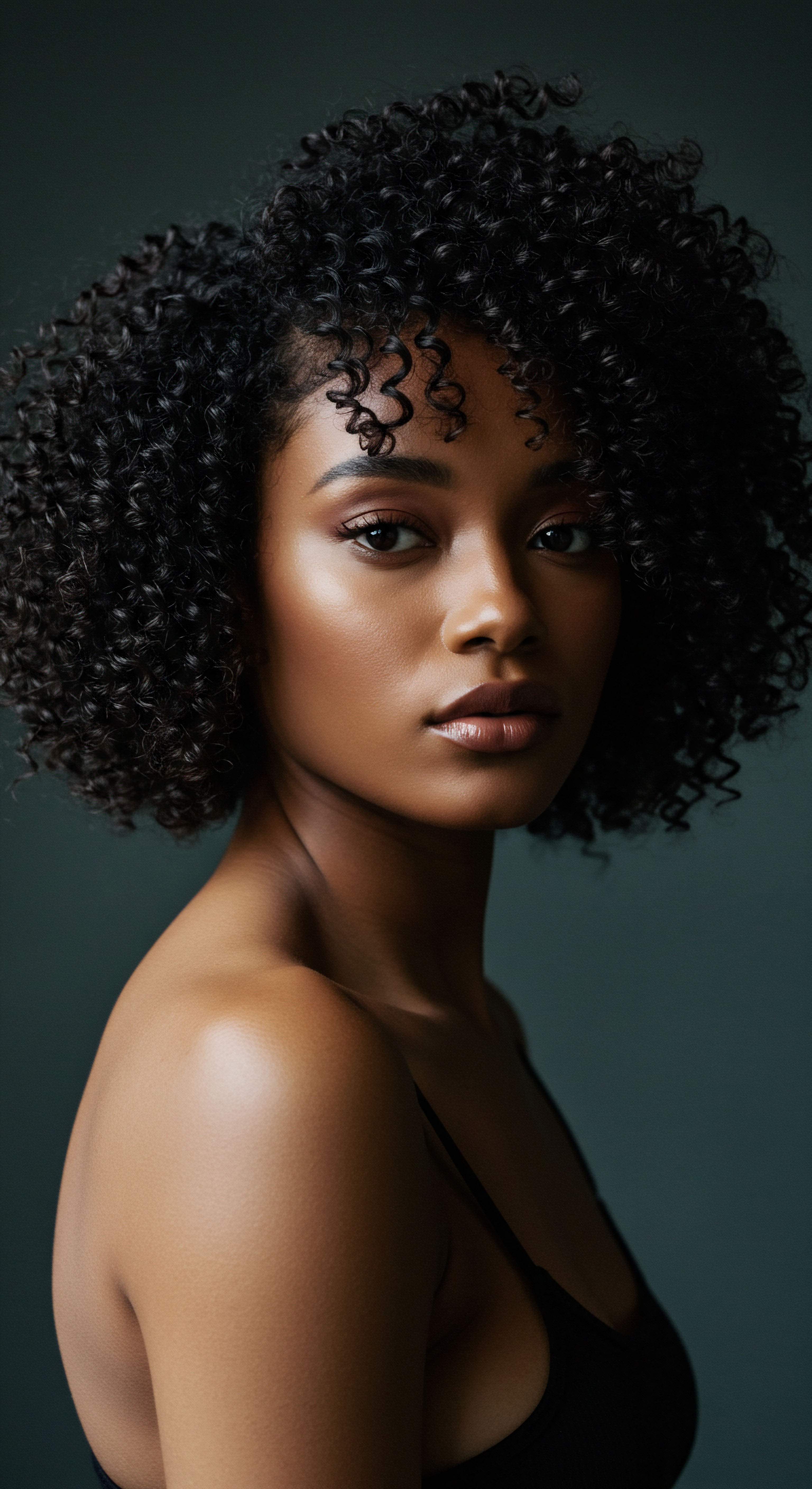
Wigs and Hair Extensions Mastery
Wigs and hair extensions have long been a part of beauty traditions across cultures, offering versatility, protection, and a means of self-expression. For textured hair, these options provide a pathway to experimenting with different lengths, colors, and styles without altering or stressing one’s natural hair.
From ancient Egyptian royalty to modern-day fashion, wigs have allowed for dramatic transformations and a shield against environmental elements. Extensions, whether sewn-in weaves, clip-ins, or tape-ins, offer temporary length and volume. The mastery of these applications involves not only aesthetic skill but also a deep understanding of how to protect the natural hair underneath. Proper braiding of the natural hair before installing extensions, along with regular cleansing and moisturizing of the scalp, are paramount to preventing damage.
This practice is also deeply intertwined with cultural resilience. For centuries, textured hair has been subjected to scrutiny and judgment. Wigs and extensions have provided a means of conforming to societal pressures when necessary, while also offering a creative outlet and a form of self-preservation.
They allow for periods of growth and rest for natural hair, minimizing daily manipulation and exposure to harsh elements. The ability to switch between styles, from natural curls to flowing straight hair, grants a unique freedom and adaptability.
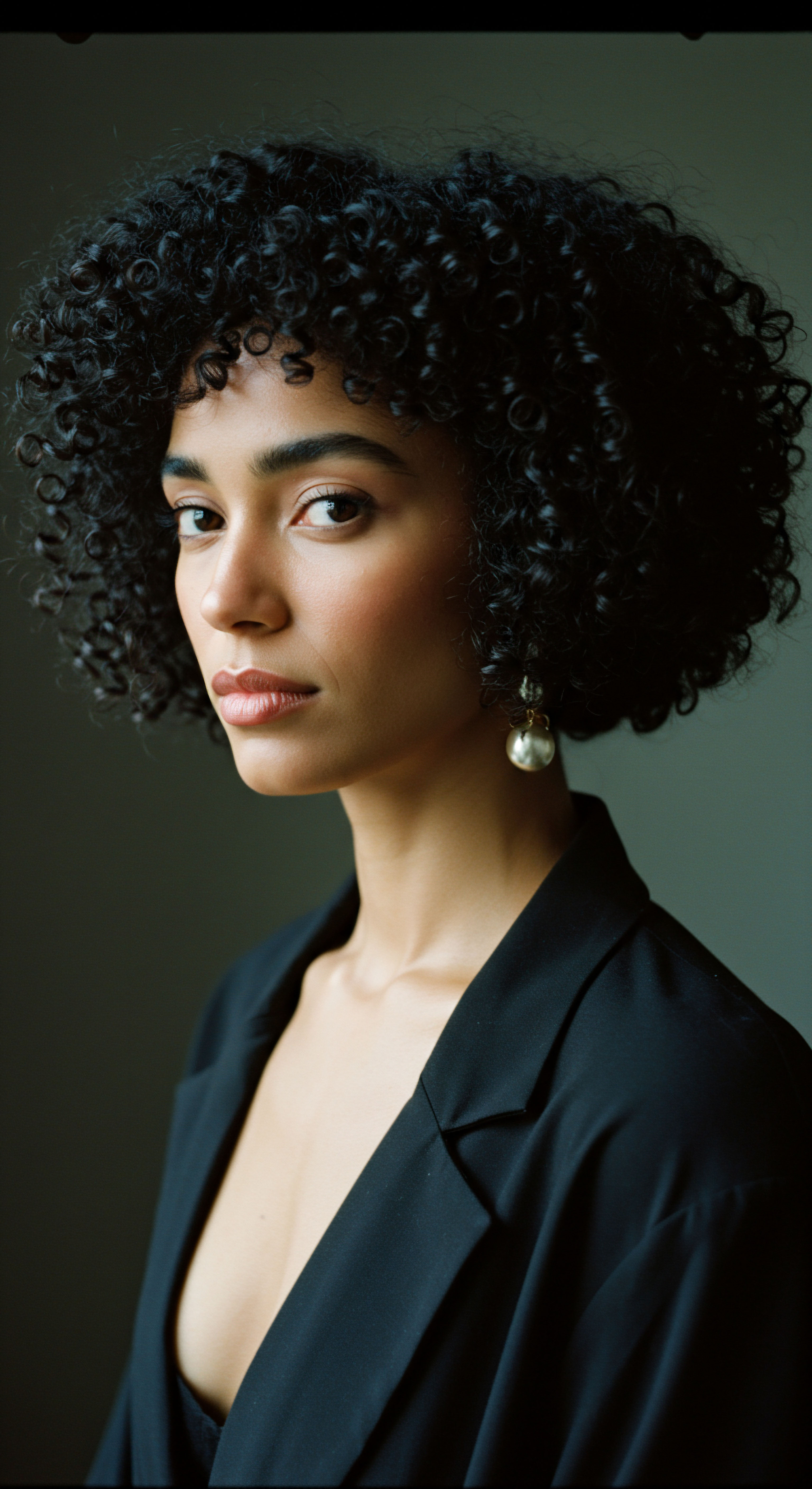
Heat Styling and Thermal Reconditioning
While the natural hair movement champions the beauty of unaltered textures, heat styling and thermal reconditioning remain prevalent choices for those who desire straightened looks. These methods, however, demand a safety-first approach to preserve hair health.
Blow Drying, Flat Ironing, and Curling with Heat Tools temporarily alter the hair’s hydrogen bonds, allowing it to become straight or wavy. Thermal reconditioning, such as chemical relaxing or permanent straightening treatments, permanently alters the hair’s disulfide bonds, yielding a straight result. Historically, methods for straightening textured hair have existed for centuries, often involving heated combs or natural pressing agents. The advent of chemical relaxers in the early 20th century marked a significant shift, offering a more lasting straight finish.
The pursuit of straight hair has historical roots in societal pressures and Eurocentric beauty standards. However, the physical and psychological costs associated with frequent or improper heat and chemical treatments are significant. Excessive heat can lead to dryness, breakage, and irreversible damage to the hair’s protein structure. Chemical relaxers, while offering a smooth appearance, can weaken the hair shaft, making it more prone to damage and even contributing to scalp conditions.
A safety-first approach means prioritizing heat protectants, using lower temperatures, limiting frequency, and providing intensive conditioning treatments. For thermal reconditioning, professional application and consistent post-treatment care are essential to mitigate potential harm. Understanding the historical context of these practices allows for a more informed and mindful approach to their modern application, recognizing the delicate balance between desired aesthetics and sustained hair health.
Modern hair care practices, from protective styles to thermal treatments, carry the echoes of historical adaptation and cultural expression.
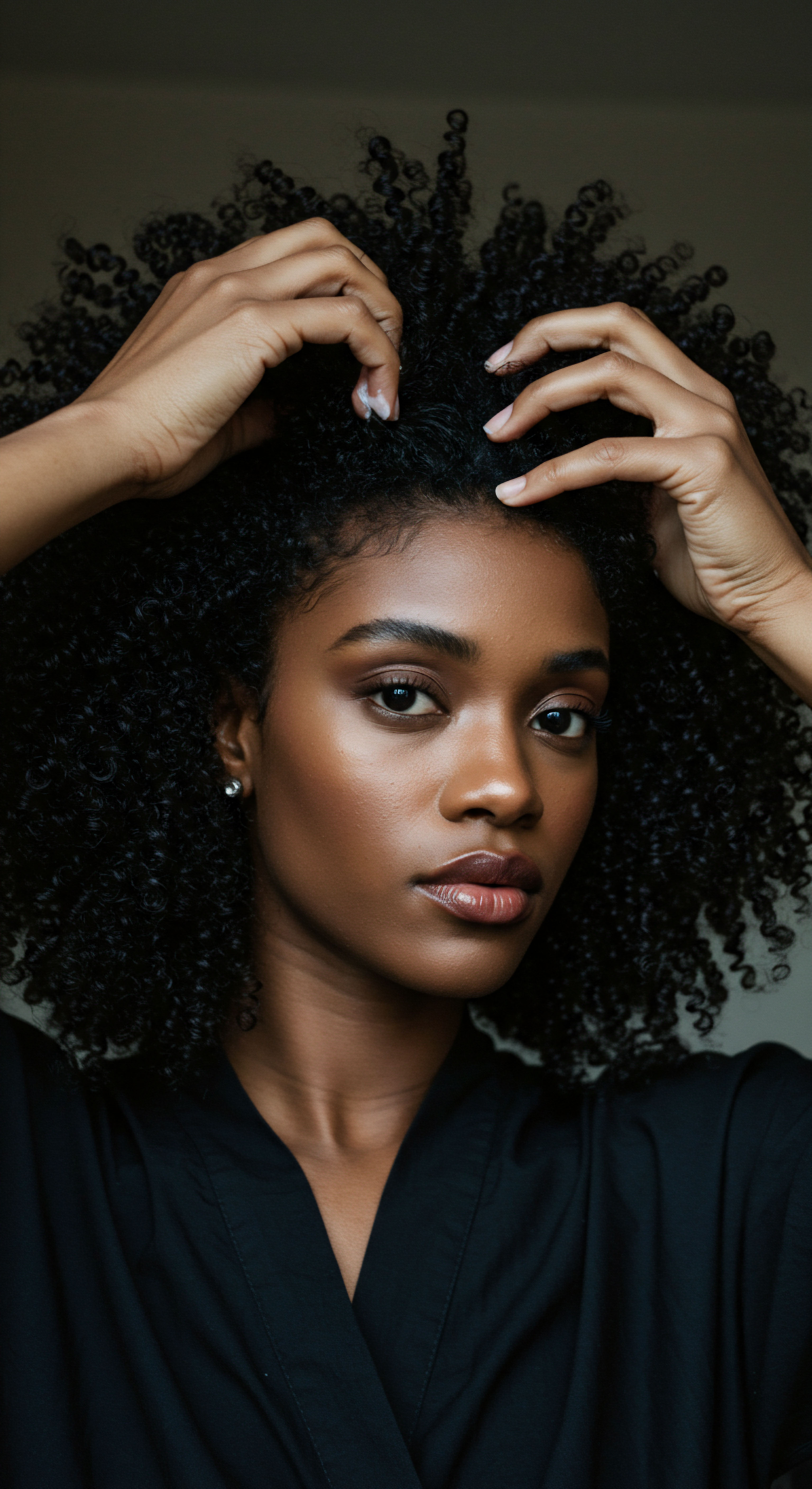
The Complete Textured Hair Toolkit
Effective textured hair care relies on a specialized array of tools, each designed to address the unique characteristics of curls and coils. These implements, some traditional and some modern, work in concert to facilitate detangling, styling, and maintenance.
| Tool Category Detangling Aids |
| Specific Items Wide-tooth comb, denman brush, finger detangling |
| Purpose Gently separates knots without causing breakage, especially on wet or conditioned hair. |
| Tool Category Styling Implements |
| Specific Items Spray bottle, hair clips, hair ties, satin/silk scrunchies |
| Purpose Provides moisture, sectioning, and gentle securing of styles. |
| Tool Category Drying Tools |
| Specific Items Microfiber towel, diffuser attachment for blow dryer |
| Purpose Reduces frizz and minimizes heat exposure during drying. |
| Tool Category Protective Accessories |
| Specific Items Satin bonnet, silk pillowcase, hair scarves |
| Purpose Shields hair from friction and moisture loss during sleep or daily activities. |
The careful selection and use of these tools can significantly impact hair health. For instance, using a wide-tooth comb for detangling, starting from the ends and working upwards, prevents unnecessary pulling and snapping of delicate strands. The use of microfiber towels or old t-shirts for drying, rather than rough terry cloth, minimizes frizz and cuticle disruption. These tools, often simple in their design, become indispensable allies in the daily ritual of nurturing textured hair, reflecting a mindful approach that respects its inherent fragility and beauty.
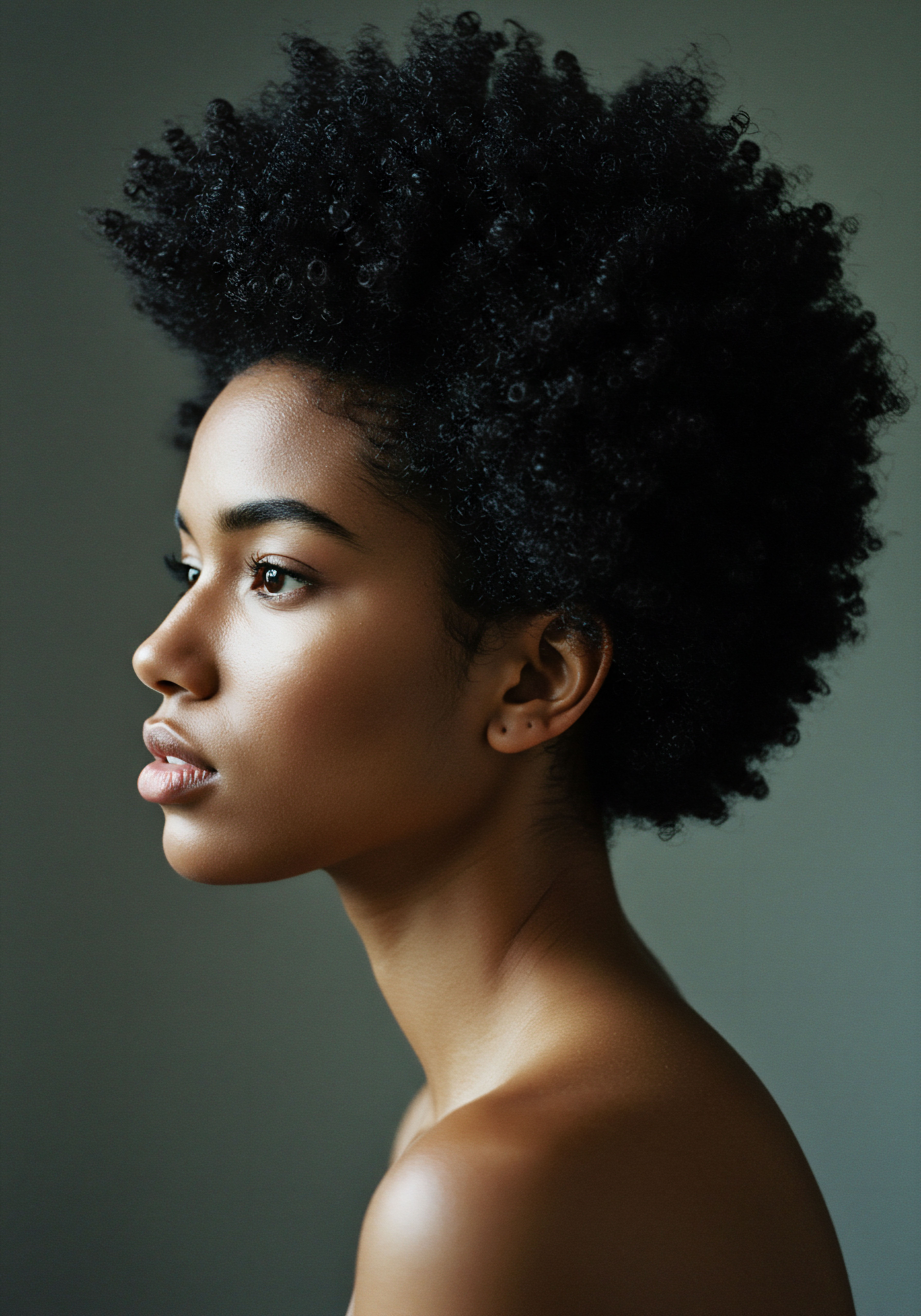
Relay
As we move deeper into the conversation surrounding textured hair, the layers of influence become more complex, revealing a profound interplay between historical burdens, cultural resilience, and contemporary understanding. The query of whether cultural traditions influence modern textured hair care practices finds its most resonant answer here, where the science of the strand meets the deep-seated human experience. This section delves into the intricate connections, drawing upon research and lived realities to illustrate how the echoes of the past reverberate through every decision, every product choice, and every quiet moment of self-care. It is a space where the nuanced impact of societal pressures and the powerful act of cultural affirmation come into sharp focus.
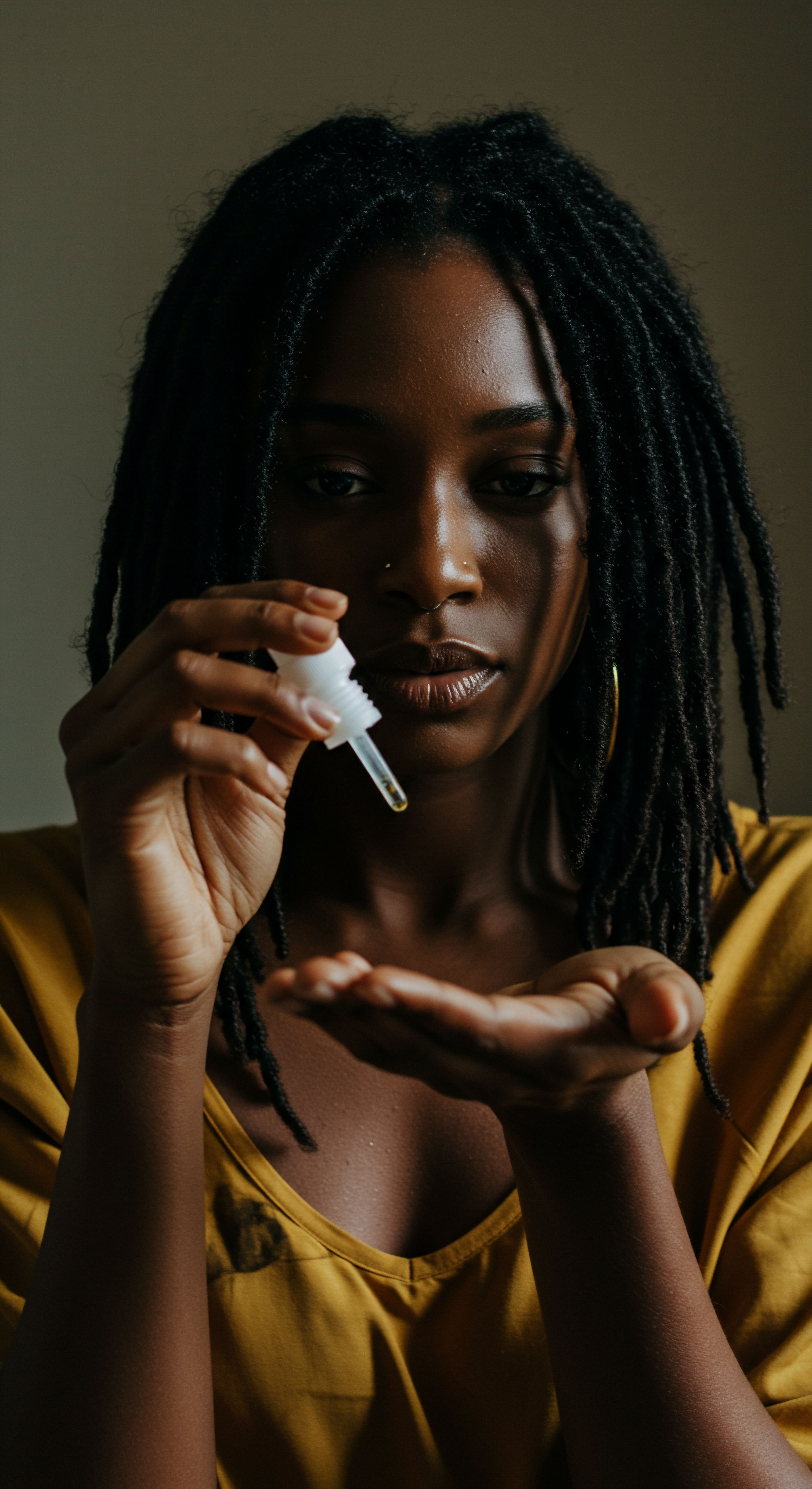
Building Personalized Textured Hair Regimens
The creation of a personalized textured hair regimen is a testament to the understanding that no two heads of hair are precisely alike, even within the same curl pattern. This modern approach, however, stands on the shoulders of generations who, through trial and error, discovered what their unique hair required. Traditional practices often involved custom concoctions of natural ingredients, passed down through families, tailored to individual needs and local resources. This ancestral knowledge, often anecdotal and observation-based, forms a crucial, though sometimes unacknowledged, foundation for today’s personalized routines.
A personalized regimen considers various factors ❉ Hair Porosity, Density, Strand Thickness, and lifestyle. It involves selecting specific cleansers, conditioners, leave-ins, and stylers that cater to these characteristics. For instance, someone with low porosity hair might prioritize lightweight, water-based products to avoid product buildup, while high porosity hair might benefit from heavier creams and butters to seal in moisture.
The modern consumer, armed with a wealth of information available through digital platforms, can now systematically construct a regimen that mirrors the tailored approach of older generations, albeit with scientific backing and a broader range of commercial options. This iterative process of observation, adjustment, and refinement is a direct continuation of the adaptive spirit seen in historical hair care.

The Nighttime Sanctuary Essential Sleep Protection and Bonnet Wisdom
The quiet hours of sleep, seemingly a time for rest, hold significant implications for textured hair health. Nighttime care, particularly the use of head coverings, is a practice deeply embedded in cultural traditions and now widely recognized for its practical benefits. For centuries, various forms of headwraps and coverings were worn in African cultures not only for modesty or social status but also for hair protection. This traditional wisdom has seamlessly transitioned into modern practices, with the satin bonnet emerging as a staple.
A Satin Bonnet or Silk Pillowcase serves as a crucial shield against friction. Cotton pillowcases, with their absorbent and rough fibers, can strip hair of moisture and cause tangling and breakage as one moves during sleep. Satin and silk, conversely, create a smooth surface that allows hair to glide, preserving moisture and minimizing frizz and mechanical damage.
This simple yet profoundly effective practice extends the life of styles, reduces the need for daily manipulation, and contributes significantly to overall hair health. The enduring popularity of bonnets and wraps speaks to a continuity of care, where ancient methods of protection are adapted with modern materials to safeguard delicate strands.
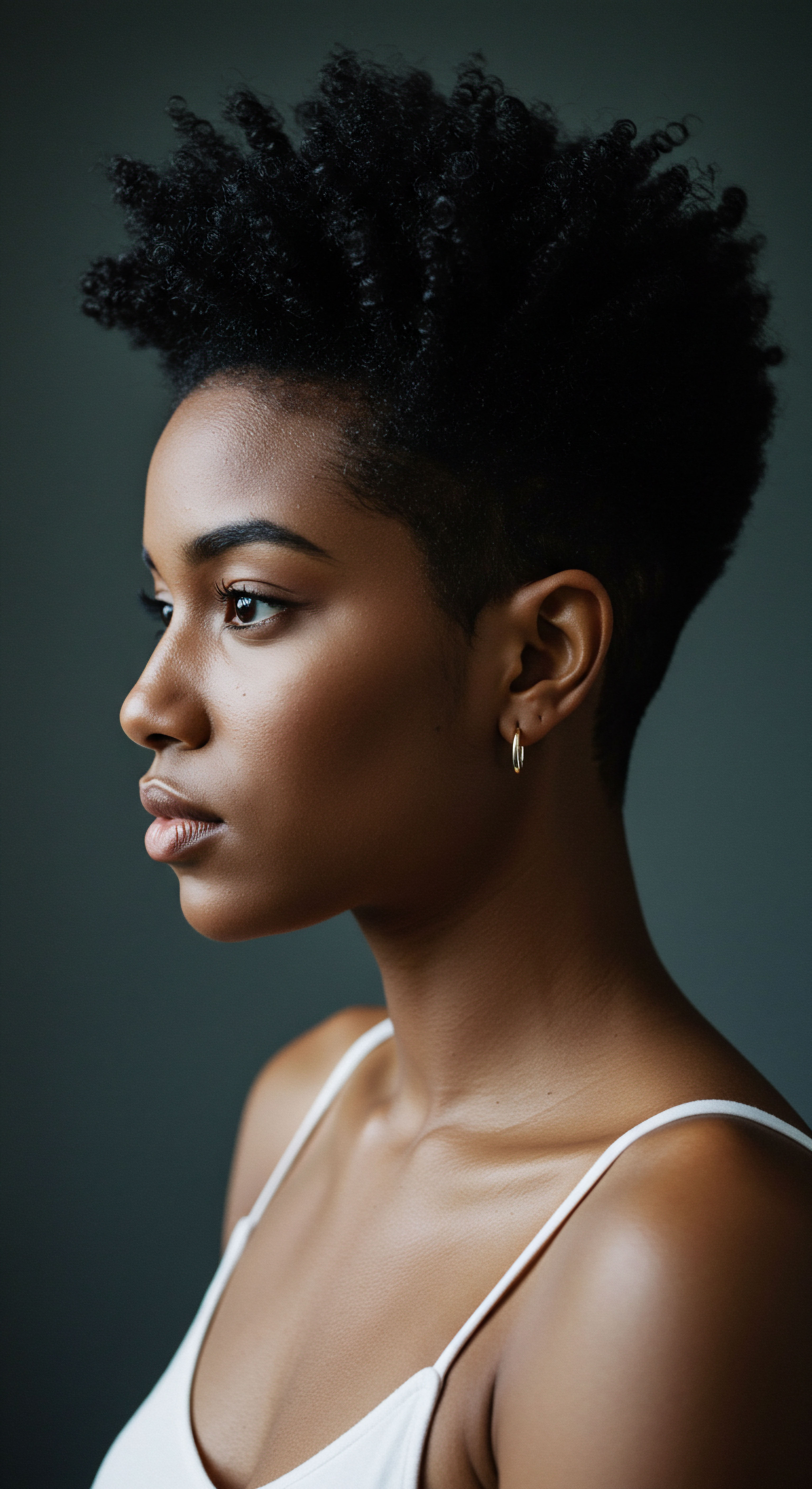
Ingredient Deep Dives for Textured Hair Needs
The modern textured hair care market is rich with ingredients, many of which have been used in traditional remedies for generations. A deeper understanding of these components reveals how ancestral knowledge continues to shape contemporary product formulations.
Consider Shea Butter, a cornerstone in many textured hair products. This ingredient, derived from the nuts of the African shea tree, has been utilized for centuries across West Africa for its moisturizing and healing properties. Its journey from traditional, hand-processed balm to a globally recognized cosmetic ingredient illustrates a direct relay of cultural knowledge into modern industry.
Research indicates that the shea sector employs an estimated 3 million women across West Africa, generating between $90 million and $200 million annually from exports, thereby providing significant economic opportunities for women in rural communities. This economic impact underscores the profound socio-cultural significance of traditional ingredients, extending beyond mere hair benefits to community empowerment.
Similarly, oils like Coconut Oil, Jojoba Oil, and Castor Oil, alongside botanical extracts such as aloe vera and hibiscus, have long histories of use in various cultural hair care practices. These ingredients are now celebrated in modern formulations for their scientifically recognized benefits:
- Coconut Oil ❉ Known for its ability to penetrate the hair shaft, reducing protein loss.
- Jojoba Oil ❉ Mimics the scalp’s natural sebum, making it an excellent moisturizer.
- Castor Oil ❉ Often used for scalp treatments, believed to support hair density.
The resurgence of interest in these natural components reflects a collective turning back to the earth, recognizing the efficacy of time-tested remedies and integrating them with modern scientific understanding.

Textured Hair Problem Solving Compendium
Addressing common textured hair challenges often involves a blend of scientific understanding and practices passed down through generations. Problems such as chronic dryness, breakage, and scalp irritation are not new; communities have developed solutions over centuries, many of which find resonance in modern approaches.
For dryness, traditional methods involved frequent oiling and water-based conditioning, a practice echoed in the modern emphasis on layering moisture (L.O.C. or L.C.O. methods – Liquid, Oil, Cream or Liquid, Cream, Oil). Breakage, often exacerbated by manipulation or chemical treatments, historically led to protective styling and minimal handling.
Today, this translates into low-manipulation styles, gentle detangling, and protein-moisture balance. Scalp health, fundamental to hair growth, was maintained through herbal rinses and regular cleansing in many traditional settings. Modern care continues this focus with gentle cleansers and targeted scalp treatments.
A compelling example of cultural influence in problem-solving manifests in the societal response to hair discrimination. Research reveals that Black Adolescent Girls are Significantly More Likely to Experience Hair-Related Discrimination and Dissatisfaction, Leading to Increased Feelings of Depression Compared to Their White and Latina Peers. This systemic issue, rooted in historical anti-Black hair biases and Eurocentric beauty standards, has spurred a powerful counter-movement. The natural hair movement, while celebrating diverse textures, also serves as a collective act of resistance against such discrimination.
It is a socio-cultural response to a problem that extends beyond mere aesthetics, affecting self-perception and mental well-being. This movement, drawing strength from historical affirmations of Black beauty, actively redefines standards and fosters a sense of belonging and pride, directly influencing how textured hair is cared for and perceived in contemporary society.
The journey of textured hair care from ancestral remedies to global markets underscores a deep cultural continuum.

Holistic Influences on Hair Health
Hair health, particularly for textured strands, is not isolated from overall well-being. A holistic view, deeply embedded in many traditional health philosophies, recognizes the interconnectedness of diet, stress, and physical practices with the vitality of one’s hair.
Traditional healers and communities often understood that a balanced diet, rich in nutrients, was essential for strong hair and skin. This aligns with modern nutritional science, which confirms the importance of vitamins (like biotin, vitamin D), minerals (iron, zinc), and proteins for optimal hair growth and strength. Similarly, stress management techniques, from meditation to communal activities, were implicitly understood to impact physical manifestations, including hair loss or dullness. The modern understanding of cortisol’s effect on hair follicles echoes this ancient wisdom.
Physical practices, beyond direct hair manipulation, also play a role. Regular exercise improves circulation, which can benefit scalp health. Adequate hydration, a simple yet vital element, contributes to the hair’s internal moisture balance.
These broader lifestyle choices, when approached with mindfulness, contribute to the overall resilience and vibrancy of textured hair, illustrating a continuity of thought that transcends centuries and cultures. The care of textured hair, then, becomes a microcosm of self-care, a reflection of a larger commitment to personal and communal well-being.
| Traditional Practice Oiling Scalp and Hair |
| Cultural Origin (Examples) West Africa (Shea Butter), India (Coconut Oil) |
| Modern Hair Care Parallel Leave-in conditioners, hair oils, scalp treatments |
| Underlying Principle Moisture retention, scalp health, protection from elements. |
| Traditional Practice Intricate Braiding |
| Cultural Origin (Examples) Various African tribes (signifying status, age) |
| Modern Hair Care Parallel Protective styles (box braids, cornrows) |
| Underlying Principle Hair protection, reduced manipulation, length retention, cultural expression. |
| Traditional Practice Head Wraps/Coverings |
| Cultural Origin (Examples) African and Caribbean communities (modesty, adornment, protection) |
| Modern Hair Care Parallel Satin bonnets, silk scarves for sleep |
| Underlying Principle Minimizing friction, preserving moisture, style longevity. |
| Traditional Practice Herbal Rinses |
| Cultural Origin (Examples) Various indigenous cultures (e.g. Chebe powder from Chad) |
| Modern Hair Care Parallel Botanical extracts in shampoos and conditioners |
| Underlying Principle Cleansing, strengthening, promoting scalp health. |
| Traditional Practice These parallels demonstrate the enduring wisdom of cultural hair care traditions in shaping contemporary practices. |

Reflection
The journey through the intricate world of textured hair care reveals a truth more profound than surface-level trends. It demonstrates that the way we attend to our coils, kinks, and waves is never a solitary act, but rather a conversation across time, deeply informed by the wisdom of our ancestors and the ongoing narrative of cultural identity. From the very structure of the hair strand to the most nuanced product choices, the influence of tradition is undeniable, manifesting in practices that prioritize moisture, protection, and a celebration of natural form. This continuous dialogue between past and present allows us to see our hair not merely as a physical attribute, but as a vibrant extension of our heritage, a testament to resilience, and a canvas for self-expression that carries forward a legacy of profound beauty.

References
- Mbilishaka, Afiya M. “PsychoHairapy ❉ Brushing Up on the History and Psychology of Black Hair.” Psi Chi Journal of Psychological Research, 2018.
- White-Jolivette, Tammy. “African American Women’s Experience of Wearing Natural Textured Hair.” Walden University, PhD dissertation, 2025.
- Smith, Tiffany. “Black women’s natural hair care communities ❉ social, political, and cultural implications.” Smith College, MSW thesis, 2019.
- Maharaj, Claudette. “Beyond the roots ❉ exploring the link between black hair and mental health.” ResearchGate, 2025.
- Mbilishaka, Afiya M. et al. “Don’t Get It Twisted ❉ Untangling the Psychology of Hair Discrimination Within Black Communities.” American Journal of Orthopsychiatry, 2024.
- Lisse, Adenique. “UConn Researcher Sheds New Light on Importance of Hair Satisfaction for Black Adolescent Girls.” Body Image, 2025.
- Williams, Kamryn Bess. “It’s More Than “Just” Hair ❉ Revitalization of Black Identity.” Folklife Magazine, 2022.
- Auster, Gara. “The Art & Business of African Hair Braiding ❉ A Guide for Modern Cosmetologists.” Self-published, 2025.
- De Leon, Cheryl, and Michelle Chikwendu. “World Afro Day Hair Equality Report.” 2019.
- Poran, Maya. “The Natural Hair Movement.” Claremont McKenna College, Senior Thesis, 2017.
- Yinug, David, and Michael Fetzer. “The Global Shea Value Chain.” United States Agency for International Development (USAID), 2010.
- Nguekeng, Jean-Pierre, et al. “Contribution of Shea-Based Livelihoods to Income of Rural Women in North-Western Ghana.” Ghana Journal of Development Studies, 2023.
- Grand View Research. “Shea Butter Market Size, Share & Trends Analysis Report.” 2022.
- Wise, Lauren, et al. “Hair Relaxer Use and Risk of Uterine Leiomyomata.” Environmental Health Perspectives, 2020.
- Byrd, Ayana, and Lori Tharps. Hair Story ❉ Untangling the Roots of Black Hair in America. St. Martin’s Press, 2014.